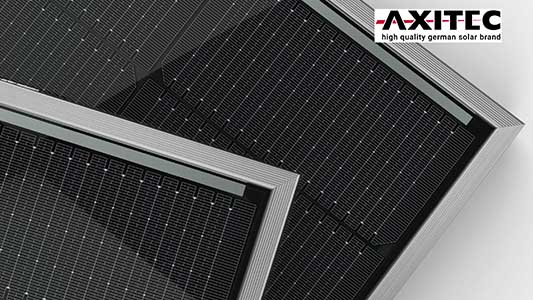
AXITEC Energy India Pvt. Ltd
The National Renewable Energy Laboratory (NREL) latest report says that TopCon solar cells have achieved up to 28% conversion efficiencies, surpassing traditional solar cells’ efficiencies. And we are here to witness the evolution.
The solar industry to improve and evolve has been witnessing rapid advancements in technology which is mainly aiming for efficiency and better performance of solar modules. To achieve the same, one of the most promising innovations on the horizon is TopCon technology, this is also the technology that is gearing to be the next big thing in the solar module manufacturing industry. The U.S. Department of Energy’s Solar Energy Technologies Office has recognized TopCon technology as a promising innovation that can significantly reduce the cost of solar electricity.
Before exploring the details of TopCon Technologies, let us first understand, “What is TopCon Technology?”
Tunnel Oxide Passivated Contact is what TopCon stands for. It is a cutting-edge solar cell technology that aims to expand the efficiency of solar modules. In other words, it is an evolution of traditional solar cell designs and represents a significant leap forward in terms of performance and cost-effectiveness.
TopCon cells feature passivated contacts that reduce electron recombination at the surface, which leads to the improvement of the cell’s overall efficiency. This is achieved through a thin layer of insulating material, often silicon dioxide, which helps minimise energy losses.
The latest development also includes the advancement of the overall design, for example, the read side contract, traditionally the contact used to have from the front side but to enhance the light absorption and energy yield now TopCon cells have rear-side contacts.

Both the aforementioned changes successfully contribute to reduced energy losses and improved overall performance.
Another reason behind its efficiency is that even in high-temperature environments, which means they are more efficient in converting sunlight into electricity. Because Solar panels with TopCon cells typically exhibit a lower temperature coefficient. TopCon technology enhances the bifaciality of solar panels, allowing them to capture sunlight from both the front and rear sides. This is also particularly advantageous in certain installation scenarios.
How is TopCon Different from MonoPERC?
MonoPERC (Monocrystalline Passivated Emitter Rear Cell) is another advanced solar cell technology that has gained traction in the industry. While both TopCon and MonoPERC aim to improve solar cell efficiency, they differ in the following crucial aspects, for example. Contact design, overall efficiency, cost, temperature performance, and so forth.
The most noticeable difference is the contact design. Because the variance in contact placement impacts shading and efficiency. MonoPERC cells have passivated contacts on the front side, while TopCon as discussed has cells feature passivated contacts on the rear side. TopCon cells have demonstrated higher efficiencies compared to MonoPERC cells in some cases. For example, TopCon solar panels have achieved conversion efficiencies exceeding 25%, while MonoPERC cells typically achieve efficiencies is approximately 23%.

Manufacturing TopCon cells may involve additional steps due to the rear-side contact design, which could affect production costs. MonoPERC cells, being an evolution of traditional monocrystalline cells, may offer a more cost-effective transition for some manufacturers. Both technologies aim to improve temperature performance, but the degree of improvement may vary. TopCon cells are often touted for their lower temperature coefficient, which means they maintain higher efficiency as temperatures rise.
A study by the International Renewable Energy Agency (IRENA) suggests that TopCon technology can lead to an increase of up to 4% in energy yield compared to traditional solar cells. However, the choice between TopCon and MonoPERC will depend on specific project requirements, cost considerations, and the availability of manufacturing capabilities. As the solar industry continues to evolve, these technologies will play a crucial role in driving solar energy’s efficiency and affordability.














